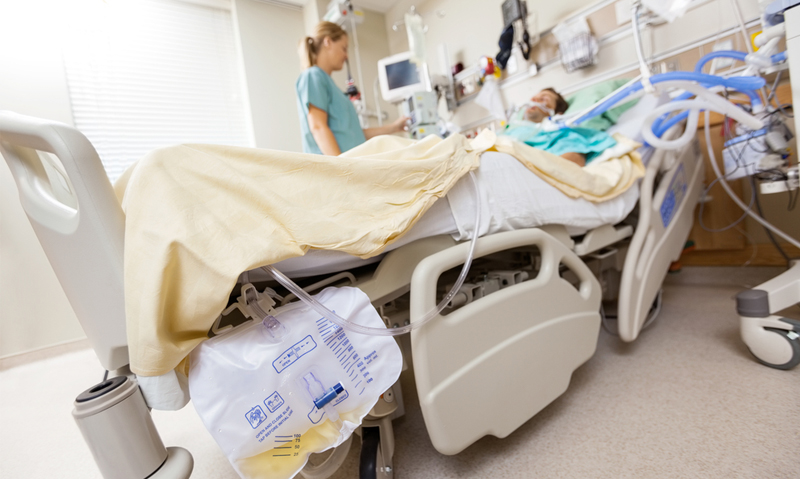INFECTIOUS diseases experts have thrown their support behind Victoria’s Staphylococcus aureus bloodstream infection surveillance system as a model for establishing a nationwide program.
The latest data from the Victorian Healthcare Associated Infection Surveillance System (VICNISS), published in the MJA, show a significant reduction in S. aureus bloodstream (SAB) infection rates across 119 public hospitals in the first 3 years of continuous surveillance. (1)
Data for 3295 SAB infections were captured, showing that 41.7% were health care associated (HA), 56.3% were community associated, and 2.1% had an unknown association.
Of the HA infections, just over a quarter occurred 48 hours or less after hospital admission and, of those, nearly 70% were associated with the presence of an indwelling medical device, such as an intravenous catheter or haemodialysis vascular access.
“Quarterly HA SAB infection rates diminished from 1.4 to 0.7 per 10 000 occupied bed days (OBDs)”, the authors wrote. The national target for SAB infection rates set by the National Healthcare Agreement in 2012 was 2.0/10 000 OBDs. (2)
Professor Peter Collignon, professor of infectious diseases at the Australian National University’s medical school, told MJA InSight that the VICNISS results were “good news”.
“This is a very good model for a national tool of surveillance”, Professor Collignon said. “It shows the value and importance of collecting this data and it provides ample data that we are able to do something about improving SAB infection rates.
“Almost three-quarters of the hospital-acquired infections were due to intravenous catheters — we know we can make improvements there.”
Professor John Turnidge, senior medical adviser at the Australian Commission on Safety and Quality in Health Care, told MJA InSight that the VICNISS report was “everything we need in surveillance”.
“Victoria made a significant investment in SAB surveillance and they are reaping the benefits of that now”, he said. “They took a very effective American model and enhanced it significantly.
“The critical messages are, first, that a quarter of all SAB infections occur early in hospital admissions, and that’s because we put devices in people. And, second, the surveillance shows that we can improve over time.”
Professor Turnidge said it would be “premature” to recommend the Victorian model be implemented nationally on the strength of the MJA report.
“There is quite a lot of intersecting work going on in this area”, he said. “Right now we are trying to work out how might come together.
“Value for money will always be a factor, but VICNISS is certainly a very effective model.”
Professor Collignon said the latest hospital surveillance report from the National Health Performance Authority emphasised the importance of collecting SAB data. The new report showed a large variation in the rate of infections between hospitals, finding 81% of SABs occurred in major hospitals, which accounted for 62% of all bed-days monitored. (3)
“We can’t get so held up in the details that we don’t collect this data”, Professor Collignon said. “It is important that we do something and we can improve things as we go along.”
1. MJA 2014; 200: 282-284
2. COAG 2012; National Healthcare Agreement
3. NHPA 2014; Healthcare-associated Staphylococcus aureus bloodstream infections in 2012–13

 more_vert
more_vert
It is great to read that VICNISS has scored so favourably!
I think that the story goes back a long time. Discussions in the mid-70s, with Glen Buckle, of the Alfred Hospital, provided a major step. Glen, from his great experience, was able to differentiate the essential and practical from the merely desirable. Nevertheless, the federal government was unable to fund any such surveillance scheme.
When MRSA appeared in major Melbourne hospitals the preventive plot was lost, for a number of reasons. The state health department set up the Standing Committee for Infection Control but, for all its virtues, the committee was unable to collect information adequate to provide a platform for useful analysis. Some years later, an outbreak of a resistance-bearing plasmid among Gram-negative rods afflicted several hospitals. By this time, a suitable information gathering model was available and could be adapted suitably without major cost.
Of course, health-care workers are busy people and filling in yet more forms and passing them on is a chore and a pain. It was necessary to make the collection of adequate information as simple as possible. Besides, a pair of exceptionally capable and pleasant individuals were dispatched to persuade front-line laboratory personnel to give of their time and efforts to cooperate – and the scheme was launched.
All such schemes have their teething problems and Geoff Hogg pointed out a number of faults. Given the chance to deal with these, he set about improving things. It appears that this process of improvement has continued – with considerable benefits.
Yes, the model should well be exported nationally. It would be necessary to keep to the KISS principle and to cooperate, rather than compete.